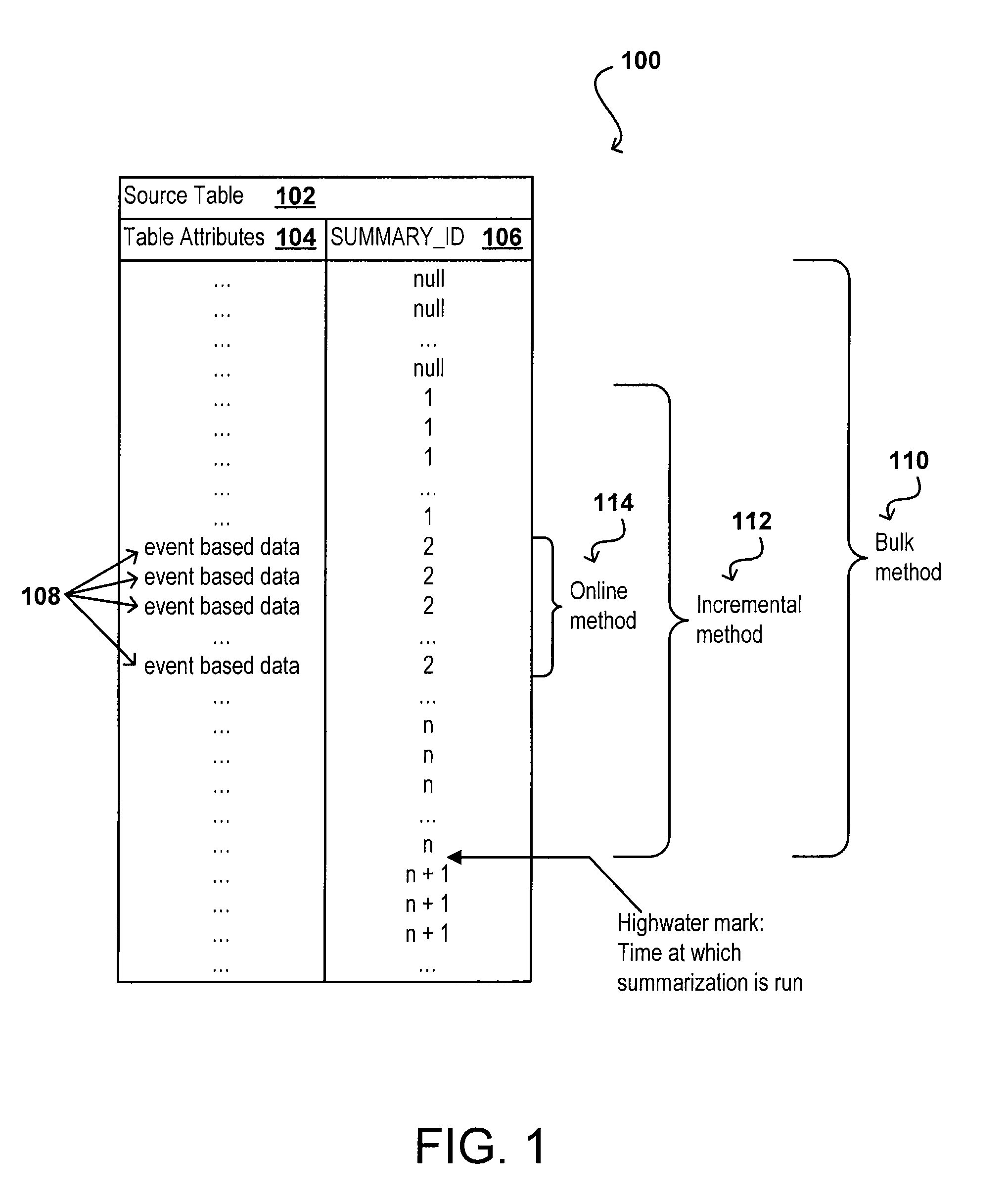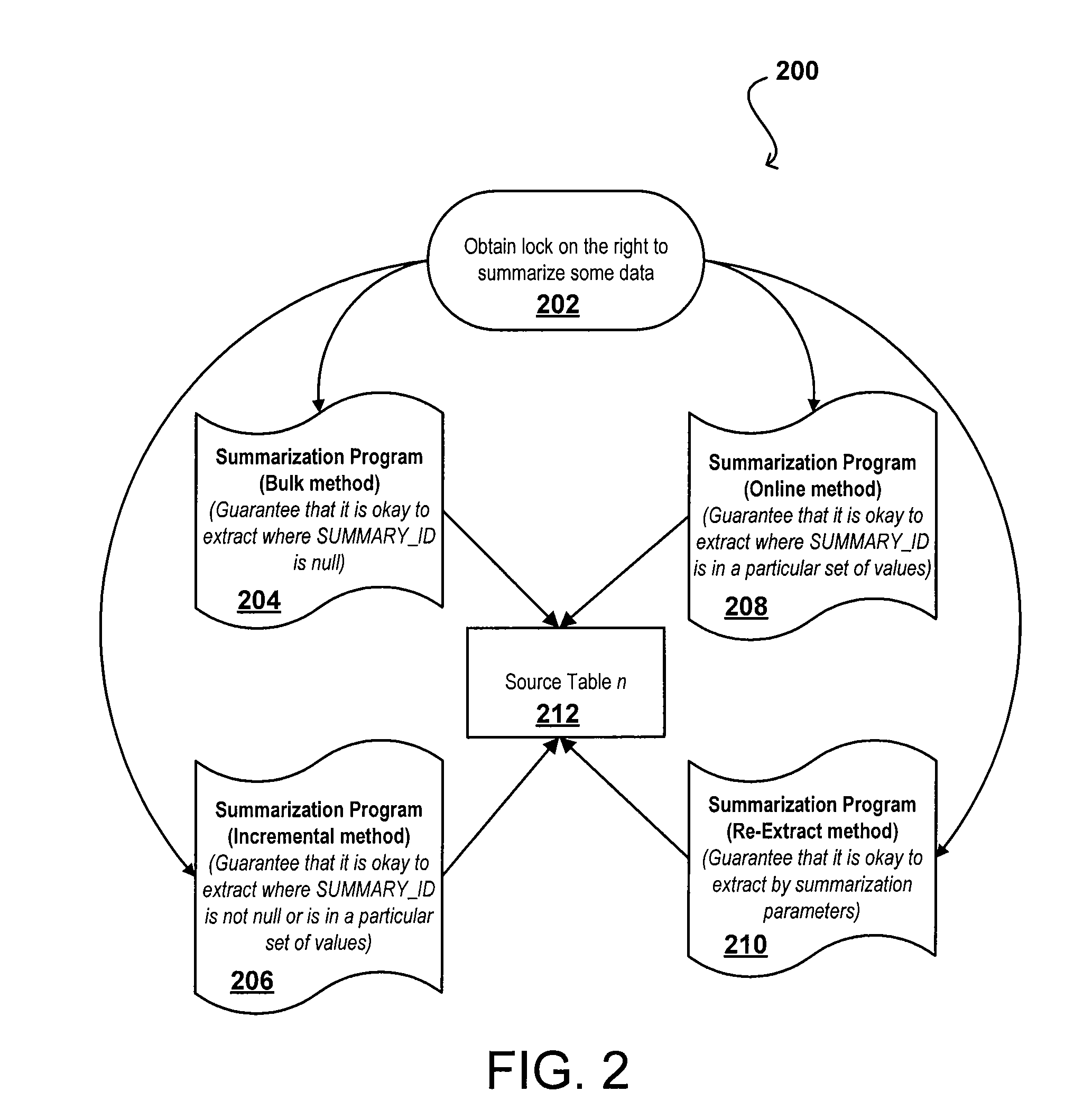Interacting methods of data summarization
a data summarization and data technology, applied in the field of extracting and summarizing data, can solve the problems of many problems, poor and the limitations of each extraction method, and achieve the effect of improving the performance of the summarization process
- Summary
- Abstract
- Description
- Claims
- Application Information
AI Technical Summary
Problems solved by technology
Method used
Image
Examples
Embodiment Construction
[0030]Systems and methods in accordance with various embodiments overcome the aforementioned and other deficiencies in existing approaches to data management and / or analysis. Embodiments of the present invention allow for bulk, incremental, and / or events based extraction and / or summarization of a common data source, for example, which can allow for switching between different methods to accommodate business, performance, or other such needs, and can provide for the dynamic extraction of different volumes of data, among various other advantages. Embodiments also can allow developers to present a scalable extraction and / or summarization solution with an efficient configurable extraction mechanism.
Data Extraction:
[0031]FIG. 1 illustrates the interaction 100 of multiple extraction methods on a single source table 102 that can be used in accordance with one embodiment. The single source may be any table or combination of tables, the data from which may be extracted and summarized using a...
PUM
 Login to View More
Login to View More Abstract
Description
Claims
Application Information
 Login to View More
Login to View More - R&D
- Intellectual Property
- Life Sciences
- Materials
- Tech Scout
- Unparalleled Data Quality
- Higher Quality Content
- 60% Fewer Hallucinations
Browse by: Latest US Patents, China's latest patents, Technical Efficacy Thesaurus, Application Domain, Technology Topic, Popular Technical Reports.
© 2025 PatSnap. All rights reserved.Legal|Privacy policy|Modern Slavery Act Transparency Statement|Sitemap|About US| Contact US: help@patsnap.com



